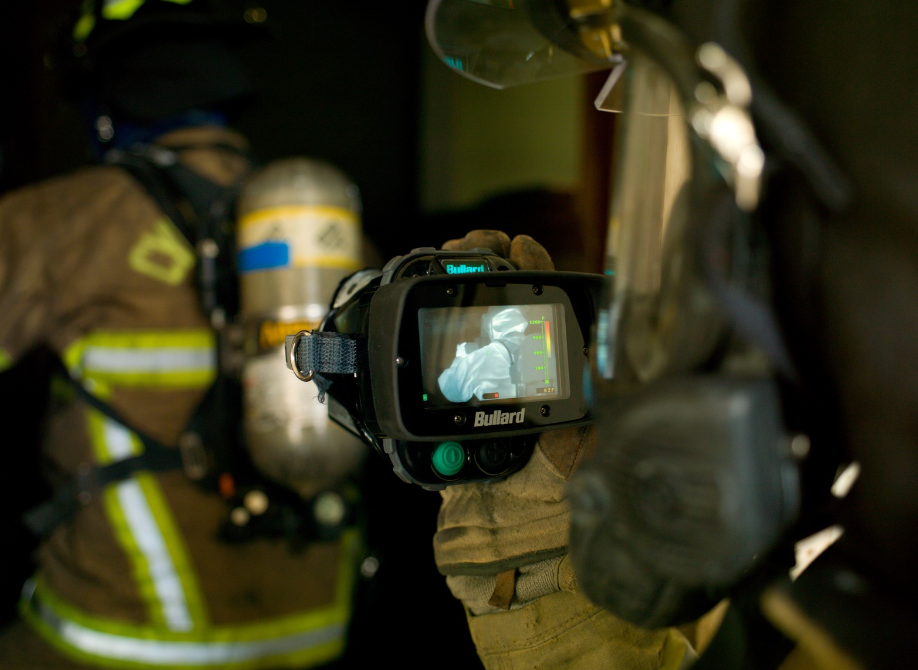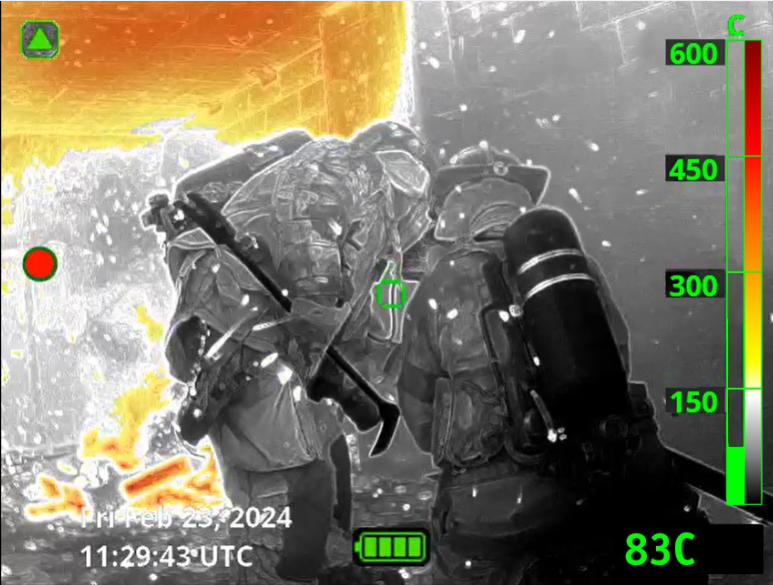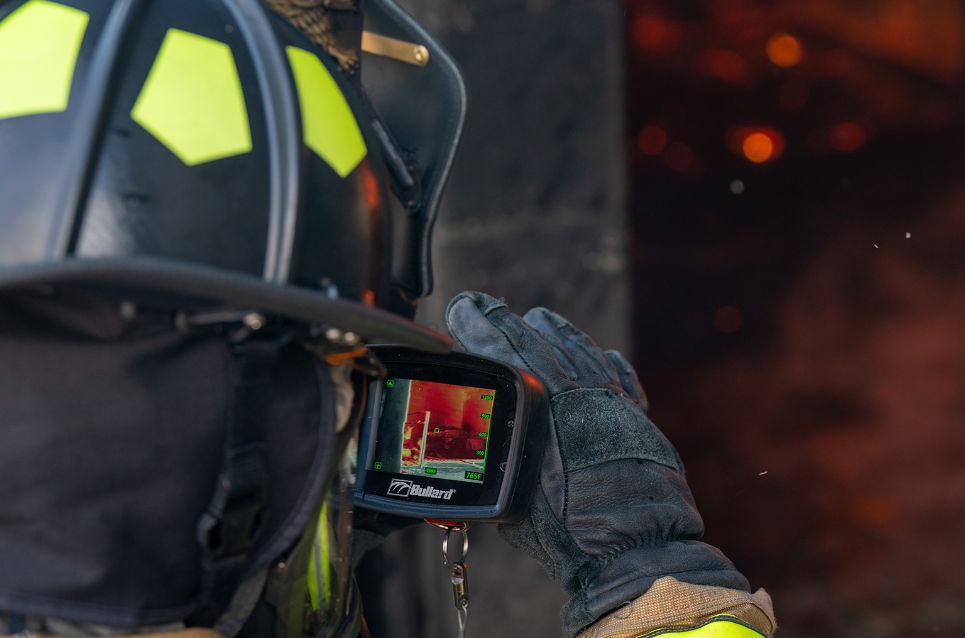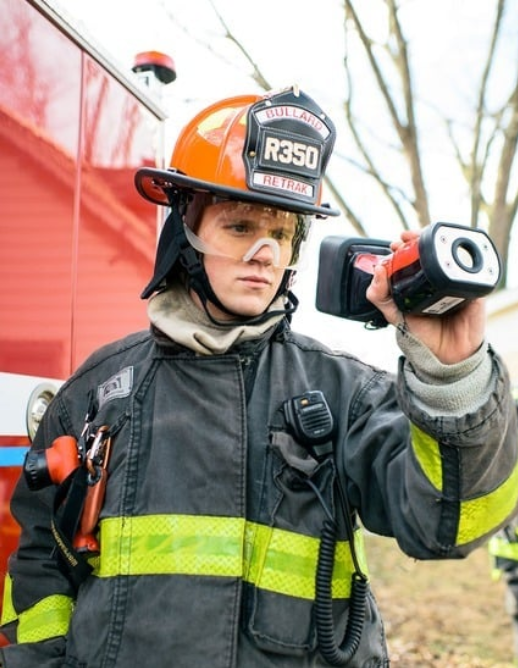Field of View (FoV) is a critical factor when choosing a thermal imager, directly impacting how effectively firefighters can navigate and assess their surroundings. To make an informed decision, it’s essential to understand the common ranges and what they mean for the thermal imager and the firefighter.
What Are Common Field of View Sizes?
Thermal imagers are designed with specific FoV angles, which define how much of a scene is visible. These angles are expressed in degrees and include:
- Wide FoV (~50°): Captures more of the scene at once, both horizontally and vertically, making it ideal for scanning open areas like warehouses or gyms.
- Narrow FoV (~20°): Focuses on a smaller area with enhanced precision, useful for spotting specific hazards or heat sources in confined spaces.
- Balanced FoV (~32°): Offers versatility with a mix of horizontal and vertical coverage, suitable for varied firefighting scenarios.
These sizes indicate the angular range the imager can see in both width (horizontal) and height (vertical). A wide FoV provides greater situational awareness, while a narrower FoV concentrates on specific details.
A Fresh Analogy: The Photographer’s Lens
Imagine a photographer choosing between different lenses:
- A wide-angle lens (like a 50° FoV) captures an expansive landscape, ideal for taking in the “big picture.”
- A zoom lens (like a 20° FoV) hones in on a specific subject, providing enhanced detail at the expense of broader context.
Similarly, thermal imagers with different FoVs determine how much of the “scene” firefighters can observe at once. In a firefighting context, both horizontal and vertical visibility matter. For example:
- Horizontal FoV: Allows firefighters to scan left and right quickly, helping them assess large open areas.
- Vertical FoV: Identifies hazards above or below eye level, such as in stairwells or multi-level structures.
Why Is Field of View So Important for Firefighters?
In smoke-filled environments with near-zero visibility, thermal imagers become a firefighter’s eyes. A well-suited FoV helps ensure they can:
- Quickly assess surroundings in large spaces with a wide horizontal and vertical range.
- Detect specific hazards or hotspots in small spaces with focused precision.
- Navigate multi-level structures where vertical visibility is critical to spotting hazards above or below.
For example, in a factory fire, a wide horizontal FoV allows a firefighter to assess multiple potential escape routes simultaneously. Meanwhile, a strong vertical FoV can help spot structural hazards, such as a weakened ceiling or intense heat at the floor level.
A Technical Note: FoV vs. Distance
It’s important to distinguish FoV from the imager’s ability to detect objects at various distances. While all thermal imagers can detect heat signatures at close and far distances, FoV determines how much of the scene is visible in the frame at once.
Choosing the Right FoV for Your Needs
When selecting a thermal imager, consider scenarios where horizontal or vertical coverage might be prioritized:
- Wide FoV (Horizontal & Vertical): Best for open areas requiring full situational awareness.
- Narrow FoV: Perfect for detailed inspections and precise targeting.
- Balanced FoV: Offers versatility for departments handling diverse environments.
Seeing the Whole Picture
Field of View is about more than just size; it’s about how horizontal and vertical dimensions work together to create a complete visual field. Whether you need broad lateral scans or coverage that helps you see hazards above and below, understanding how these dimensions influence visibility is key. Selecting the appropriate balance can help ensure your thermal imager is equipped to handle the demands of critical scenarios your team may encounter.
To talk to an expert to determine the right thermal imager for your department, click Here.



